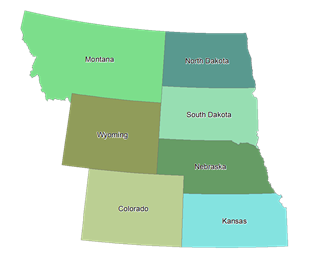
The Great Plains Region, headquartered in Bismarck, N.D., was established in 1984 to protect and restore wetlands and grasslands in the United States Great Plains. Today, the GPR carries out conservation programs in seven states that include some of the most important nesting and migration habitat on the continent. DU has conserved more than 3.2 million acres in the Great Plains states of North Dakota, South Dakota, Nebraska, Montana, Kansas, Colorado and Wyoming.
Upwards to 50 percent of the continent’s waterfowl nest in the Prairie Pothole Region states of Montana, North Dakota and South Dakota, where DU protects grasslands and wetlands. DU also works with farmers and landowners to promote planting winter wheat, which makes good nesting habitat since it is planted in the fall and has less disruption in the spring.
Ducks and other wetland-dependent birds depend on migration habitat to feed, rest and build vital energy reserves. DU restores and protects habitat in the Rainwater Basin in Nebraska and along the Platte River in Nebraska, Colorado and Wyoming; the mountain wetlands of Colorado, Montana and Wyoming; and the Cheyenne Bottoms in Kansas. Research has shown that the quality of migration habitat affects the condition of birds returning north to the nesting grounds.
DU is developing new ways to help landowners conserve land through its Ecosystems Services, including the Environmental Water Markets, Carbon Sequestration and Wetland Mitigation programs.

Ducks Unlimited uses cookies to enhance your browsing experience, optimize site functionality, analyze traffic, and deliver personalized advertising through third parties. By continuing to use this site, you agree to our use of cookies. View Privacy Policy